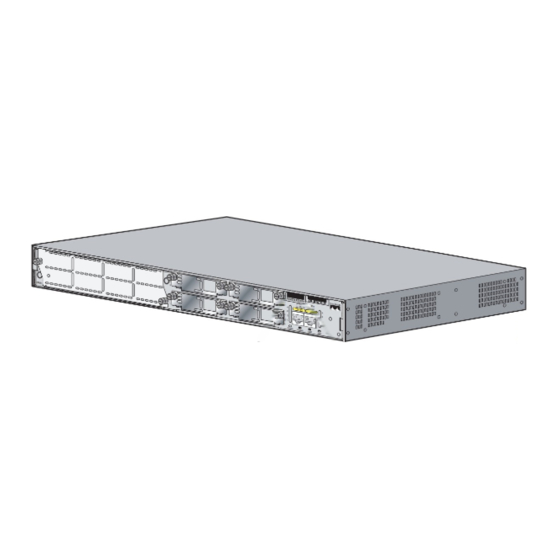Cisco 2851 - Integrated Services Router Manual del usuario - Página 7
Navegue en línea o descargue pdf Manual del usuario para Enrutador de red Cisco 2851 - Integrated Services Router. Cisco 2851 - Integrated Services Router 25 páginas. Power up and initial configuration procedures
También para Cisco 2851 - Integrated Services Router: Instalación y actualizaciones (21 páginas), Ficha de datos (20 páginas), Manual de inicio rápido (47 páginas), Configuración (10 páginas)

Table 4
10/100 Ethernet LAN Port LEDs
AIM LEDs
PVDM LEDs
Power LED
Activity LEDs
Auxiliary LED
Compact Flash LED
Console Port
Auxiliary Port
Main Power Plug
Redundant Power Supply Plug
There are two USB ports but they are not supported currently. The ports will be supported in the future
for smartcard or token reader.
The CF card that stored the IOS image is considered an internal memory module, because the IOS image
stored in the card may not be modified or upgraded. The card itself must never be removed from the
drive. Tamper evident seal will be placed over the card in the drive.
Roles and Services
Authentication in Cisco 2851 is role-based. There are two main roles in the router that operators can
assume: the Crypto Officer role and the User role. The administrator of the router assumes the Crypto
Officer role in order to configure and maintain the router using Crypto Officer services, while the Users
exercise only the basic User services. The module supports RADIUS and TACACS+ for authentication.
A complete description of all the management and configuration capabilities of the router can be found
in the Performing Basic System Management manual and in the online help for the router.
User Services
Users enter the system by accessing the console port with a terminal program or via IPSec protected
telnet or SSH session to a LAN port. The IOS prompts the User for username and password. If the
password is correct, the User is allowed entry to the IOS executive program.
The services available to the User role consist of the following:
•
•
•
•
OL-8717-01
Cisco 2851 FIPS 140-2 Logical Interfaces (Continued)
Status Functions—View state of interfaces and protocols, version of IOS currently running.
Network Functions—Connect to other network devices through outgoing telnet, PPP, etc. and
initiate diagnostic network services (i.e., ping, mtrace).
Terminal Functions—Adjust the terminal session (e.g., lock the terminal, adjust flow control).
Directory Services—Display directory of files kept in flash memory.
Cisco 2851 Integrated Services Router FIPS 140-2 Non Proprietary Security Policy
Status Output Interface
Power Interface
Cisco 2851 Routers
7
